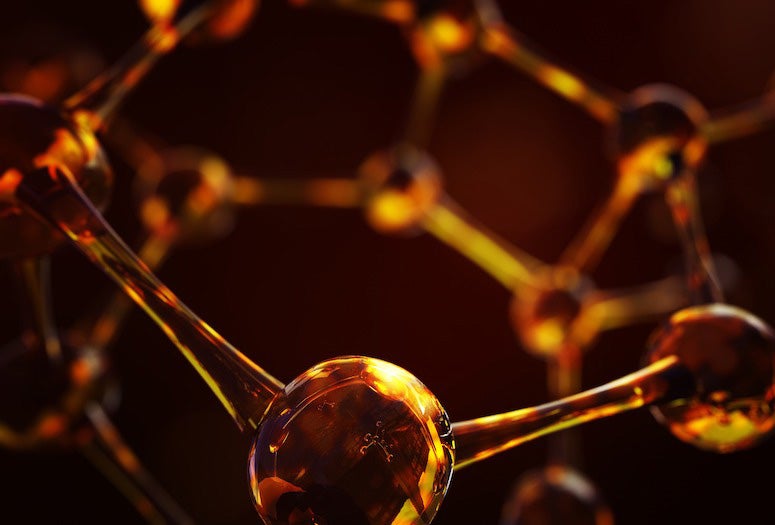Technologies for removing carbon from the atmosphere keep improving, but solutions for what to do with the carbon once it’s captured are harder to come by.

The lab of Rice University materials scientist Pulickel Ajayan and collaborators developed a way to wrest the carbon from carbon dioxide and affix it to hydrogen atoms, forming methane ⎯ a valuable fuel and industrial feedstock. According to the study published in Advanced Materials, the method relies on electrolysis and catalysts developed by grafting isolated copper atoms on two-dimensional polymer templates.
“Electricity-driven carbon dioxide conversion can produce a large array of industrial fuels and feedstocks via different pathways,” said Soumyabrata Roy, a research scientist in the Ajayan lab and the study’s lead author. “However, carbon dioxide-to-methane conversion involves an eight-step pathway that raises significant challenges for selective and energy-efficient methane production.
“Overcoming such issues can help close the artificial carbon cycle at meaningful scales, and the development of efficient and affordable catalysts is a key step toward achieving this goal.”
The polymer templates, which were made of alternating carbon and nitrogen atoms, have tiny pores where copper atoms can fit at varying distances from one another. The catalysts assemble at room temperature in water with the copper atoms displacing the host metal ions in the polymer templates. When tested in a reactor, the catalysts enabled the reduction of carbon dioxide to methane in one half of the cell, while oxygen was produced from water in the other half.
“We found that modulating the distances between the copper atoms lowered the energy needed for key reaction steps, thereby speeding up the chemical conversion,” Roy said. “This cooperative action of nearby copper atoms helped produce methane at a very high rate of selectivity and efficiency.”

The catalysts developed by Roy and collaborators yielded one of the most rapid and efficient electrolysis-based conversions of carbon dioxide to methane known so far, helping advance the conversion process both in terms of fundamental scientific insight and performance level.
“If system-level energy and carbon conversion efficiencies can be addressed, inexpensive and efficient materials like these will help catalyze the industrial translation of electrochemical carbon dioxide reduction technology,” said Jingjie Wu, an associate professor of chemical and environmental engineering at the University of Cincinnati.
Ajayan, Rice’s Benjamin M. and Mary Greenwood Anderson Professor of Engineering and chair of the Department of Materials Science and NanoEngineering, added that the “design and development of novel catalysts are central to the energy and sustainability challenges we face.”
“Single-atom dispersed catalysts present an exciting approach in this effort,” Ajayan said.
Wu and Chandra Veer Singh, a professor of materials science and engineering at the University of Toronto, were key contributors to the study.
The research was supported by the U.S. Air Force Office of Scientific Research and Clarkson Aerospace Corporation (FA9550-21-1-0460), the Alexander von Humboldt Foundation, a Marie Skłodowska-Curie Fellowship H2020-MSCA-IF-2019 (896637), the Max Planck Society, Brazil’s National Council for Scientific and Technological Development (405752/2022-9, 403064/2021-0) and the State of São Paulo Research Foundation (2020/14741-6, 2021/11162-8).
- Peer-reviewed paper:
-
“Cooperative Copper Single Atom Catalyst in Two-dimensional Carbon Nitride for Enhanced CO2 Electrolysis to Methane” | Advanced Materials | DOI: 10.1002/adma.202300713
Authors: Soumyabrata Roy, Zhengyuan Li, Zhiwen Chen, Astrid Campos Mata, Pawan Kumar, Saurav Sarma, Ivo Teixeira, Ingrid Silva, Guanhui Gao, Nadezda Tarakina, Golam Kibria, Chandra Veer Singh, Jingjie Wu and Pulickel Ajayanhttps://onlinelibrary.wiley.com/doi/abs/10.1002/adma.202300713
- Image downloads:
-
https://news-network.rice.edu/news/files/2023/09/230202_Maksud-Rahman_Gustavo-4504.jpg
CAPTION: Soumyabrata Roy is a Rice University postdoctoral research associate in materials science and nanoengineering and the study’s lead author. (Photo by Gustavo Raskosky/Rice University)
https://news-network.rice.edu/news/files/2023/09/210707_Ajayan_Fitlow_116-77.jpg
CAPTION: Pulickel Ajayan is the Benjamin M. and Mary Greenwood Anderson Professor of Engineering and chair of the Department of Materials Science and NanoEngineering. (Photo by Jeff Fitlow/Rice University)
- Related stories:
-
Rice lab’s boron nitride composite could be useful for advanced technology applications:
https://news.rice.edu/news/2023/rice-labs-boron-nitride-composite-could-be-useful-advanced-technology-applications
Engineered wood grows stronger while trapping carbon dioxide:
https://news.rice.edu/news/2023/engineered-wood-grows-stronger-while-trapping-carbon-dioxide - Links:
-
Department of Materials Science and NanoEngineering: msne.rice.edu
George R. Brown School of Engineering: https://engineering.rice.edu
- About Rice:
-
Located on a 300-acre forested campus in Houston, Rice University is consistently ranked among the nation’s top 20 universities by U.S. News & World Report. Rice has highly respected schools of Architecture, Business, Continuing Studies, Engineering, Humanities, Music, Natural Sciences and Social Sciences and is home to the Baker Institute for Public Policy. With 4,552 undergraduates and 3,998 graduate students, Rice’s undergraduate student-to-faculty ratio is just under 6-to-1. Its residential college system builds close-knit communities and lifelong friendships, just one reason why Rice is ranked No. 1 for lots of race/class interaction and No. 4 for quality of life by the Princeton Review. Rice is also rated as a best value among private universities by Kiplinger’s Personal Finance.

